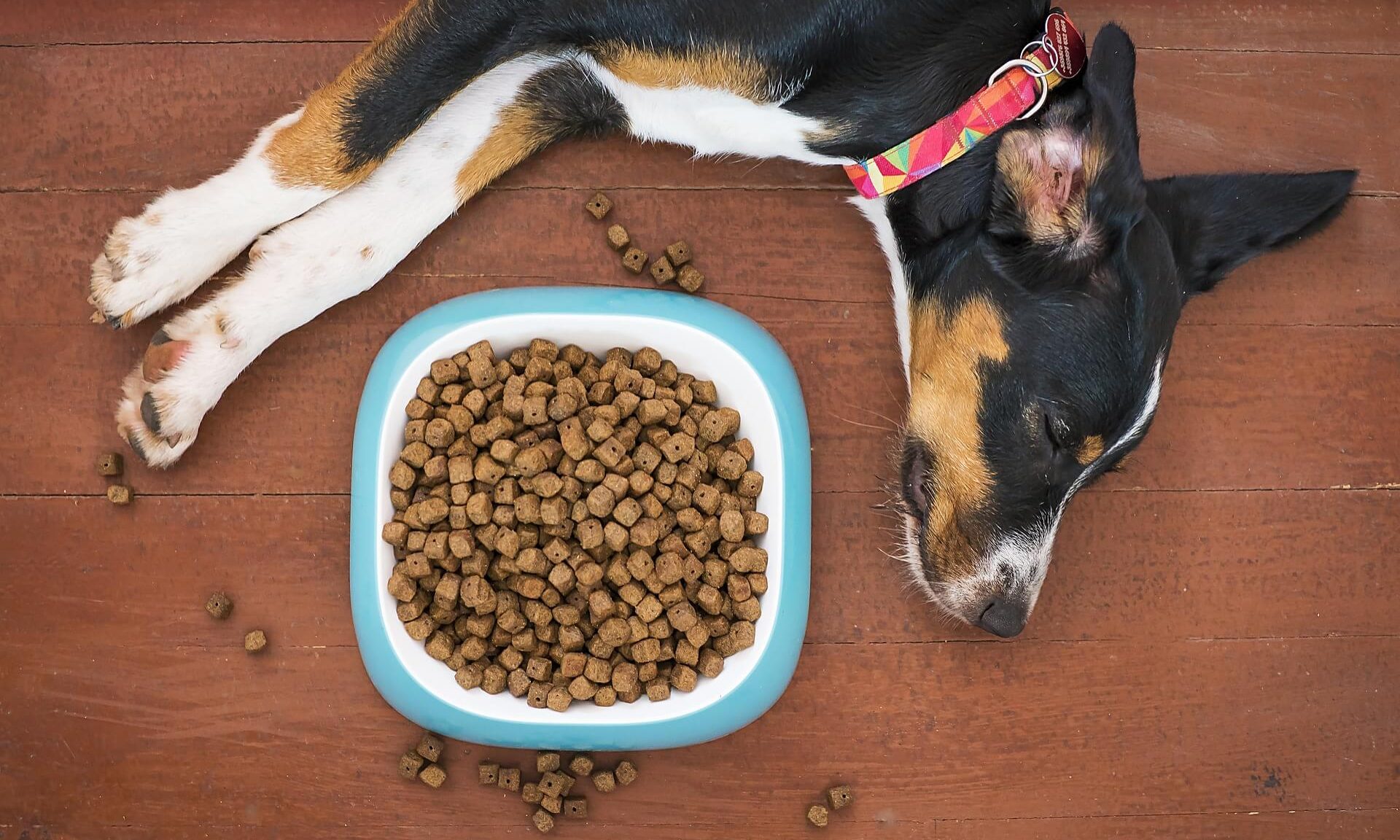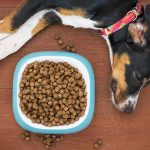There’s a variety of food options available for our pets, from traditional dry kibble to wet canned food, dehydrated food, or even the BARF diet. A homemade diet can also be an excellent choice, provided it’s designed with guidance from a canine nutrition professional to ensure it’s balanced and nutritionally adequate. In this post I am sharing 16 Ways to Encourage your Pet to Eat.
Table of Contents
Choose the right kibble for your pet
If you decide to go with kibble, it is important to select high-quality products that are suited to your pet’s specific needs, such as their age or activity level. Read ingredient labels carefully – the first ingredient should be dehydrated meat, as it guarantees a consistent percentage after the kibble preparation process.
Stick to the recommended portion sizes
Follow the manufacturer’s recommended portion sizes based on your pet’s weight. Adjust the portion size if your pet gains or loses weight until you find the ideal amount for their needs. Overfeeding may lead to the misconception that your pet isn’t eating well when, in fact, they’re simply being given too much food.
Maintain a consistent feeding schedule and environment
pets thrive on routines, so try to feed them at the same time every day. Establishing a schedule is the first step in encouraging them to eat their kibble. Also, make sure they always have access to clean, fresh water.
Gradually transition to new food
If your pet is reluctant to eat their kibble, try transitioning to new food gradually to avoid digestive issues. Mix the old food with the new one, starting with a 75/25 ratio and increasing the proportion of new food every couple of days. Remain consistent in your approach, and your pet will eventually adjust to the new food. However, if your pet is unwell, consult a veterinarian for feeding advice tailored to their specific condition.
Make your pet hungry
Instead of leaving food out all the time, establish a feeding schedule with 2 or 3 meals per day at set times. This helps control your pet’s food intake and prevents overeating. Withhold food for 12 hours to make them hungry, but never let them go without food for more than 24 hours, as this could lead to health issues.
Change your pet’s food bowl
Consider using a shallow, non-plastic or non-metal food bowl to avoid adding unwanted flavors or smells to your pet’s food. A shallow bowl also prevents whisker discomfort.
Identify your pet’s eating preferences
Some pets prefer social eating, while others like to eat in solitude. For social eaters, pet them while offering food. For solitary eaters, leave them alone with their food for 15 minutes, then remove any uneaten portions.
Prevent food aversion
Avoid forcing your pet to eat, as this can create a lasting repulsion to a specific food. Instead, offer food for 15 minutes, then remove uneaten portions and try again after a couple of hours.

Keep food fresh
Pets are sensitive to taste and smell, so it’s essential to keep their food fresh. Don’t leave wet food out all day, and store dry food in an airtight container. Give your pet 20 minutes to eat, then refrigerate any leftovers until the next mealtime.
Begin with familiar food
When introducing a new diet to your pet, especially after an illness or upon vet advice, start with food they already enjoy. Ensure they are eating well before gradually transitioning to the new diet.
Add a tasty topping
Sprinkle a flavorful and enticing topping on your pet’s food to make it more appealing. Some popular options include chicken, tuna, grated parmesan cheese, or Fortiflora probiotic.
Offer strong-smelling food
Since pets rely on their sense of smell when eating, offer them aromatic food like sardines. If your pet has a stuffy nose, try keeping them in the bathroom while you shower to help clear their nasal passages.
Warm up the food
Warming up your pet’s food can enhance its aroma and make it more appealing. Be cautious not to overheat the food, and check the temperature on your wrist before serving.
Hand-feed your pet
If your pet remains hesitant to eat, try hand-feeding them. This technique works particularly well for social eaters and can be a powerful way to encourage them to eat.
Use appetite stimulants
For unwell pets, consider using appetite stimulants like Mirtazepine or Cyproheptadine, which can help boost their appetite. Consult your vet for the best option and dosage.
Consider tube feeding
In extreme cases where a pet cannot or will not eat, tube feeding may be necessary. Consult your vet to determine the appropriate type of feeding tube and discuss the benefits and risks of this method.
If you follow these above tips and strategies with patience, you can successfully encourage your pet to eat their food and maintain a healthy and balanced diet.
Explore different food options for your pet
There’s a variety of food options available for our pets, from traditional dry kibble to wet canned food, dehydrated food, or even the BARF diet. A homemade diet can also be an excellent choice, provided it’s designed with guidance from a canine nutrition professional to ensure it’s balanced and nutritionally adequate.
Choose the right kibble for your pet
If you decide to go with kibble, it is important to select high-quality products that are suited to your pet’s specific needs, such as their age or activity level. Read ingredient labels carefully – the first ingredient should be dehydrated meat, as it guarantees a consistent percentage after the kibble preparation process.
Stick to the recommended portion sizes
Follow the manufacturer’s recommended portion sizes based on your pet’s weight. Adjust the portion size if your pet gains or loses weight until you find the ideal amount for their needs. Overfeeding may lead to the misconception that your pet isn’t eating well when, in fact, they’re simply being given too much food.
Maintain a consistent feeding schedule and environment
pets thrive on routines, so try to feed them at the same time every day. Establishing a schedule is the first step in encouraging them to eat their kibble. Also, make sure they always have access to clean, fresh water.
Gradually transition to new food
If your pet is reluctant to eat their kibble, try transitioning to new food gradually to avoid digestive issues. Mix the old food with the new one, starting with a 75/25 ratio and increasing the proportion of new food every couple of days. Remain consistent in your approach, and your pet will eventually adjust to the new food. However, if your pet is unwell, consult a veterinarian for feeding advice tailored to their specific condition.
Make your pet hungry
Instead of leaving food out all the time, establish a feeding schedule with 2 or 3 meals per day at set times. This helps control your pet’s food intake and prevents overeating. Withhold food for 12 hours to make them hungry, but never let them go without food for more than 24 hours, as this could lead to health issues.
Change your pet’s food bowl
Consider using a shallow, non-plastic or non-metal food bowl to avoid adding unwanted flavors or smells to your pet’s food. A shallow bowl also prevents whisker discomfort.
Identify your pet’s eating preferences
Some pets prefer social eating, while others like to eat in solitude. For social eaters, pet them while offering food. For solitary eaters, leave them alone with their food for 15 minutes, then remove any uneaten portions.
Prevent food aversion
Avoid forcing your pet to eat, as this can create a lasting repulsion to a specific food. Instead, offer food for 15 minutes, then remove uneaten portions and try again after a couple of hours.

Keep food fresh
Pets are sensitive to taste and smell, so it’s essential to keep their food fresh. Don’t leave wet food out all day, and store dry food in an airtight container. Give your pet 20 minutes to eat, then refrigerate any leftovers until the next mealtime.
Begin with familiar food
When introducing a new diet to your pet, especially after an illness or upon vet advice, start with food they already enjoy. Ensure they are eating well before gradually transitioning to the new diet.
Add a tasty topping
Sprinkle a flavorful and enticing topping on your pet’s food to make it more appealing. Some popular options include chicken, tuna, grated parmesan cheese, or Fortiflora probiotic.
Offer strong-smelling food
Since pets rely on their sense of smell when eating, offer them aromatic food like sardines. If your pet has a stuffy nose, try keeping them in the bathroom while you shower to help clear their nasal passages.
Warm up the food
Warming up your pet’s food can enhance its aroma and make it more appealing. Be cautious not to overheat the food, and check the temperature on your wrist before serving.
Hand-feed your pet
If your pet remains hesitant to eat, try hand-feeding them. This technique works particularly well for social eaters and can be a powerful way to encourage them to eat.
Use appetite stimulants
For unwell pets, consider using appetite stimulants like Mirtazepine or Cyproheptadine, which can help boost their appetite. Consult your vet for the best option and dosage.
Consider tube feeding
In extreme cases where a pet cannot or will not eat, tube feeding may be necessary. Consult your vet to determine the appropriate type of feeding tube and discuss the benefits and risks of this method.
If you follow these above tips and strategies with patience, you can successfully encourage your pet to eat their food and maintain a healthy and balanced diet.










